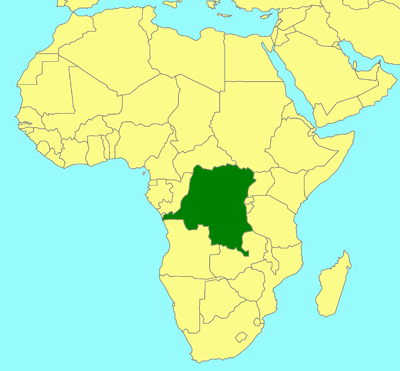 |
Anacharoides striaticeps Cameron
(Life:
Kingdom: Metazoa (animals);
Phylum: Arthropoda;
Class: Hexapoda; Order:
Hymenoptera;
Superfamily: Cynipoidea; Family: Figitidae;
Subfamily: Aspicerinae; Genus: Anacharoides)
Anacharoides striaticeps Cameron, 1904. Holotype:
Africa Museum, Tervuren (RMCA) Type locality: Haut-Ule (Democratic
Republic of Congo).
Anacharoides arcus Quinlan, 1979
Anacharoides decellius Quinlan, 1979
Anacharoides elongaticornis Benoit, 1956 Holotype:
Africa Museum, Tervuren (MRAC) Type locality: Haut-Ule (Democratic
Republic of Congo).
Anacharoides eurytergis Benoit, 1956
Anacharoides nigra Quinlan, 1979
Anacharoides sanitas Quinlan, 1979
Anacharoides suspensus Quinlan, 1979 |
Distribution
|

Democratic Republic of Congo.
|
Biology |
Two specimens from SANCI are associated with isolated host
puparia that were identified by F.C. Thompson (Smithsonian Institution)
as belonging to Ischiodon aegyptius (Weidemann). Label data on
another specimen, collected in Uganda and deposited in the BMNH, reads
“parasite on syrphid larval predator of psyllid”; another specimen in
the BMNH collected in Uganda has label data recording the host as “Ischiodon
sp.”; these specimens lack host remains. A third specimen, collected
in Senegal and deposited in the BMNH, reads “ex Ischiodon aegypticum”;
this specimen lacks host remains. |
Diagnosis |
This species closely resembles A. nicknacki, but
can be differentiated from that species by the lack of well-developed
antero-admedial signum struts (distinctly larger than surrounding rugae
in A. nicknacki); distinct from A. pallida by the presence
of rugae over the entire mesoscutum (shagreened in A. pallida);
distinct from A. quadrus and A. paragi by the lack of
additional antero-admedial signum struts (at least 2 in both A.
paragi and A. quadrus); distinct from A. stygius by
the lack of horizontal strigae on the mesoscutum.
Quinlan (1979) described six species that, in the
present work, are considered synonyms of A. striaticeps. As with
A. pallida, the morphology of this species is particularly
difficult to interpret if insufficient lighting is used. Two key
character systems employed by Quinlan (1979) are the sculpture of the
mesoscutum and the shape of the scutellar acetabulum (referred to as the
‘apical depression of the scutellum’). In the case of the mesoscutal
morphology, directional and non-directional light will reveal very
different character states on the same specimen; careful examination of
the mesoscutum of Quinlan’s (1979) holotypes revealed that several
species described in that work were merely representing the
morphological variation within A. striaticeps. A similar
situation occurs with the scutellar acetabulum: the shape of the
anterior and posterior margins of this structure vary from distinctly
round to nearly straight, in the same specimen, solely dependent upon
examination angle. In the preparation of the present study, this
character was originally employed only to be excluded upon the discovery
of this artifact. |
References |
Benoit, P.L.G. 1956. Figitidae - Aspicerinae
nouveaux du Congo Belge. Revue Zool. Bot. afr. 53: 195-204.
Buffington,
M.L. & van Noort, S. 2009.
A world revision of Anacharoides Cameron, 1904 (Hymenoptera:
Figitidae) with a description of a new species. Zookeys 20:
245-274.
Quinlan, J. 1979. A revisionary classification of
the Cynipoidea (Hymenoptera) of the Ethiopian Zoogeographical Region.
Aspicerinae (Figitidae) and Oberthuerellinae (Liopteridae). Bulletin
of the British Museum of Natural History (Entomology) 39: 85-133. |
Credits
|
Photographs
by
Matt Buffington
(Systematic Entomology Laboratory, USDA/ARS).
Map illustration © Simon van Noort (Iziko Museums of South Africa).
|
|